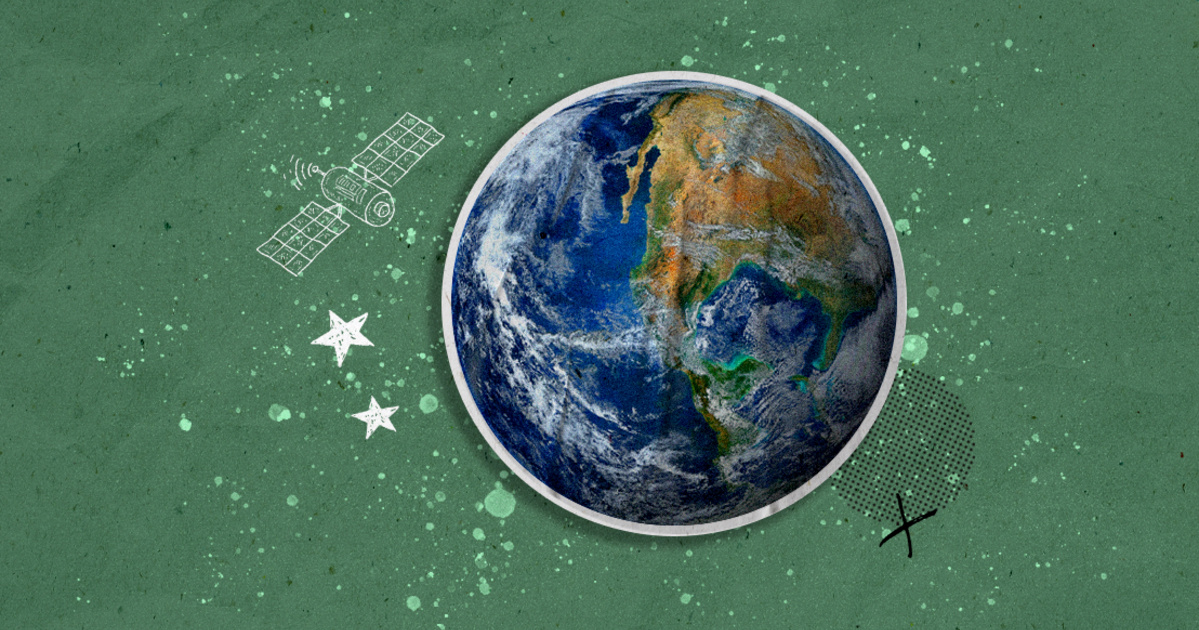After our short trip on Venus, we travel back in our imaginary spaceship, while trying to overcome the shock caused by the temperature of 470 degrees Celsius and a surface pressure much higher than on Earth. The destination this time is the third planet in the solar system, Annaly is located about 40 million kilometers from Venus. When we look out the window, we can already see it, and when we look at the surface, we are greeted by a familiar sight, which continues to intensify after landing: All this is no coincidence, because we are on Earth, the mother planet of humanity, the only planet where there is life that we can meet It does, at least according to our current knowledge.
Photo: Emilia Nemeth/Index
That is why interesting things about the Earth cannot be summarized in one article. We know so much about our planet that it would be difficult for a book, or even an entire library, to contain the knowledge. Did you know, for example, that approximately 70 percent of the Earth's surface is covered by water, but during our history we have mapped only 20 percent of the areas underwater? Humans have visited fewer underwater areas – according to NASA measurements, this value can be about 5 percent. By the way, the depth of our oceans is on average four kilometers, and water hides many things from us, for example volcanoes, most of which are located under water.
The largest of these is the Mauna Kea volcano in Hawaii, which is higher from base to peak than Mount Everest, but since its height is measured only above the surface, it cannot be called the highest point on Earth. The longest mountain range on Earth is also underwater, at the bottom of the Arctic and Atlantic Oceans – a mountain range four times longer than the Andes, Rocky Mountains and Himalayas combined. However, this was not always the case. The Earth has changed a lot over billions of years – for example, if we were to condense its history into a one-hour movie, humans, Homo sapiens, would only appear at the last second.
Beginnings
We are four and a half billion years ago, when the solar system was replaced by a large cloud of gases and dust, which gradually began to shrink and move in a circular motion over time. The Sun is formed from a dense ball of gas that forms in the middle of the clouds, while rocky planets such as Mercury, Venus, Earth and Mars are formed from precipitated crystalline material left outside. After their formation, the planets mostly resembled a glowing sphere, their surface was inflamed, and their constituent elements existed continuously—the denser material moved toward the planet's core, while the lower material moved toward the surface.
During this process, the internal structure of the Earth was formed according to our current knowledge: in the outer part, we find the Earth's crust, then moving inward, the Earth's mantle, and after that, the Earth's core, consisting of the outer and inner mantle. Inner layers, welcome us. Later, when the crust solidified and volcanic processes began, the crust split into sheets (or never came together to form a single solid crust), and then a new spherical crust formed consisting of gases, plus the atmosphere, and on the surface A – thin in planetary dimensions – and covering Also partial to water. Interestingly, there is still not complete agreement among astronomers about how water got to the planet – some believe that Earth already had water during its formation, while others believe it came from asteroids that hit the planet in its early days.
However, before the Earth took its final shape, something happened that we can still see today. According to one of the most widely accepted theories by astronomers, a Mars-sized planet collided with Earth, tearing off much of the planet. The unknown planet moved away, but the Earth remained in its original orbit – with the difference that the debris began to orbit the planet. The materials were finally assembled, and the result was a small planet, or moon if you prefer – the newly created celestial body entered orbit around Earth, and continues to do its work to this day – at night. And sometimes the day – the sky, we refer to as the moon.
We didn't find this anywhere else
As mentioned earlier, according to our current knowledge, Earth is the only planet on which life has evolved – we have not found an Earth-like planet in other star systems nor in other galaxies; At least not a life-proven one. We have already found many Earth-like planets. What these celestial bodies have in common is that we thought they would provide the necessary conditions for life one by one, but the research that followed the discovery proved in each case that the Earth is completely unique.
The planet TRAPPIST-1e orbiting the star TRAPPIST-1 40.7 light-years away from us, for example, has long appeared to have conditions similar to those of Earth. The two planets have roughly the same size, radius, gravity and temperature, thanks to the fact that TRAPPIST-1e orbits its star in the so-called habitable zone. The habitable zone or habitability zone is the region of a star system in which life as we know it could develop. This is very important for astronomers, because only planets orbiting stars in the habitable zone can be taken into account during Earth 2.0 research. But why did we stop beating TRAPPIST-1e? The question may arise. Well, because it turns out the planet has a fixed axis of rotation – so half of it is constantly pointing towards its star, while the other stares into the endless darkness, which isn't exactly convenient for the human race.
Right now, Kepler-452b orbits a star about 1,400 light-years from Earth, which keeps us optimistic. Kepler-452b orbits about 156 million kilometers from its star (about the same distance as Earth and the Sun), with an orbital period of about 385 days, at least five times its mass, and roughly half the diameter of Earth. Looking at the data, the planet could easily have everything necessary to form life, but what is worrying is that it receives slightly more energy from its star than Earth receives from the Sun, as this could lead to the release of greenhouse gases. In any case, we would not be sure of the conditions prevailing on planet Earth today, as we would have to travel at least 1,400 years to reach it even if we were traveling at the speed of light.
Even Martians lived on Earth
Interestingly, given the number of galaxies, stars and planets waiting to be discovered, we can be almost certain that life exists beyond Earth, but our discoveries have not been successful so far. According to some theories, millions of years ago, there could have been life on our two neighboring planets, Venus and Mars – however, the term “Martian” that has entered the common language has nothing to do with Martian life. Although few people know, this concept actually comes from Hungarian scholars who immigrated to the United States in the twentieth century.
Because they all spoke English with a strong accent, they were considered outsiders in American society. In addition, the Hungarian scholars appear to have been of extraordinary intelligence, spoke an incomprehensible native language, and came from a small, remote country, which led to them being called Martians, which they themselves later adopted. This term was first used by Leo Szilárd, who jokingly claimed that Hungary is a front for aliens from Mars. Asked why there is no evidence of intelligent life outside Earth, despite the high probability of it, Szilard replied: “They are already among us, they just call themselves Hungarians.”
Martians here, Martians there, humans will most likely be the first true living creatures on the planet, as NASA is already in the process of planning exploratory missions that will send people to the Red Planet instead of robots – but we'll tell you the details next time.
Parts of the series of articles published so far:
Mercury: It's scorching hot, but ice covers the planet closest to the sun
Venus: Named after the goddess of beauty but embodying the inferno of Hell
















































